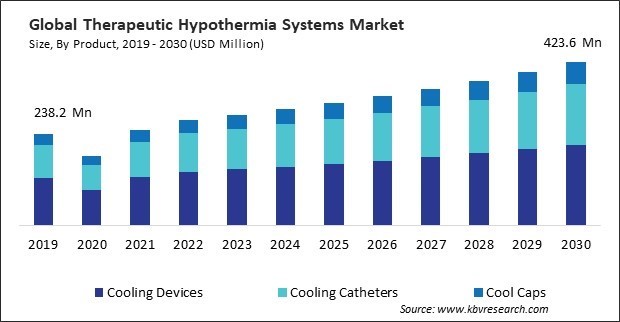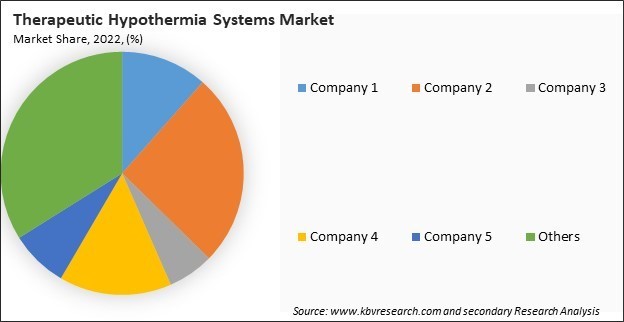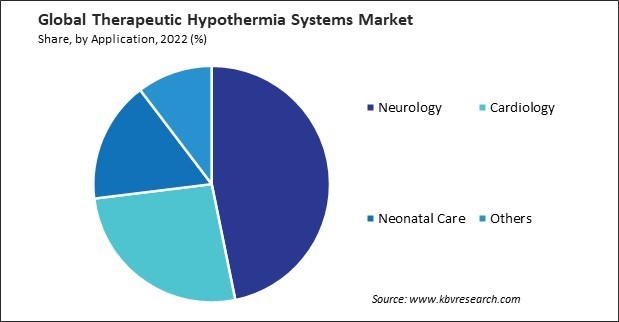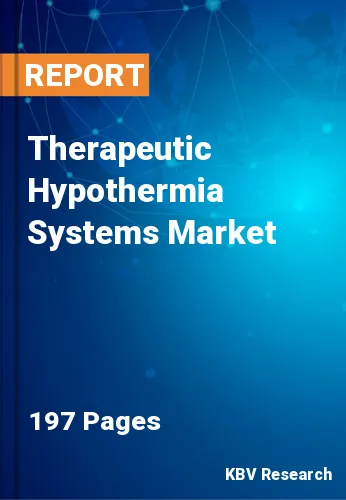“Global Therapeutic Hypothermia Systems Market to reach a market value of USD 423.6 Million by 2030 growing at a CAGR of 5.7%”
The Global Therapeutic Hypothermia Systems Market size is expected to reach $423.6 million by 2030, rising at a market growth of 5.7% CAGR during the forecast period.
North America has seen a growing adoption of therapeutic hypothermia, especially in critical care settings. Therefore, the North America segment captured $110.9 million revenue in the market in 2022. The treatment's effectiveness in post-cardiac arrest care and neurological conditions has contributed to its acceptance in hospitals and healthcare facilities across the region. Owing to these factors, there will be increased demand in the segment.

Therapeutic hypothermia has been recognized as an effective intervention for reducing the risk of brain injury in newborns who have experienced perinatal asphyxia. The primary goal of therapeutic hypothermia in neonatology is to mitigate the extent of brain injury in newborns. By lowering the infant's body temperature, usually to around 33-34 degrees Celsius, therapeutic hypothermia slows down metabolic processes, reduces inflammation, and helps protect brain cells from damage caused by oxygen deprivation. In addition, the increasing incidence of neonatal encephalopathy has led to a growing body of clinical evidence supporting the efficacy of therapeutic hypothermia in improving outcomes for affected infants. Additionally, therapeutic hypothermia, also known as targeted temperature management, is recommended as a specific care strategy for individuals who have experienced cardiac arrest. The objective is to modulate body temperature intentionally to achieve hypothermia, typically 32-36 degrees Celsius, for a specified duration. One of the primary goals of inducing therapeutic hypothermia post-cardiac arrest is to improve neurological outcomes. Cardiac arrest can lead to cerebral ischemia and reperfusion injury, resulting in brain damage. Lowering body temperature helps mitigate the extent of neurological damage, potentially preserving cognitive function and reducing the risk of long-term neurological deficits. Thus, these factors will assist in the expansion of the therapeutic hypothermia systems market.
However, the therapeutic hypothermia process demands meticulous temperature management to achieve the desired therapeutic effects. However, the clinical complexities associated with individual patient characteristics, comorbidities, and response variations pose challenges in maintaining consistent and precise temperature control. Variations in patient response to therapeutic hypothermia introduce uncertainties and challenges. Factors like age, pre-existing medical conditions, and the nature of the underlying injury or illness can lead to diverse responses, making it difficult to establish standardized protocols for temperature modulation. Additionally, effective therapeutic hypothermia necessitates advanced monitoring systems to continuously assess the patient's temperature, vital signs, and neurological status. The requirement for sophisticated monitoring equipment increases the complexity of implementing these systems, adding challenges in terms of accessibility and integration. Thus, these factors will lead to reduced demand for therapeutic hypothermic systems.

The leading players in the market are competing with diverse innovative offerings to remain competitive in the market. The above illustration shows the percentage of revenue shared by some of the leading companies in the market. The leading players of the market are adopting various strategies in order to cater demand coming from the different industries. The key developmental strategies in the market are Acquisitions, and Partnerships & Collaborations.
On the basis of application, the therapeutic hypothermia systems market is divided into neurology, cardiology, neonatal care, and others. In 2022, the cardiology segment witnessed a substantial revenue share in the therapeutic hypothermia systems market. Ongoing research and clinical trials continue to provide supporting evidence for the efficacy of therapeutic hypothermia in improving neurological outcomes after cardiac arrest. Positive research outcomes contribute to the growth of the cardiology segment within therapeutic hypothermia systems as healthcare providers seek evidence-based practices for post-cardiac arrest care. Therefore, these factors will assist in the growth of the segment.

Based on product, the therapeutic hypothermia systems market is segmented into cooling devices, cooling catheters, and cool caps. The cooling devices segment held the largest revenue share in the therapeutic hypothermia systems market in 2022. Innovations in device design, materials, and temperature control mechanisms contribute to developing more efficient and precise cooling devices. Manufacturers continually refine their products to enhance performance, reduce energy consumption, and improve patient comfort during therapeutic hypothermia. These factors will boost the demand in the segment.
Free Valuable Insights: Global Therapeutic Hypothermia Systems Market size to reach USD 423.6 Million by 2030
By region, the therapeutic hypothermia systems market is segmented into North America, Europe, Asia Pacific, and LAMEA. In 2022, the Europe segment acquired a considerable revenue share in the therapeutic hypothermia systems market. The quality of healthcare infrastructure in European countries can influence the adoption of advanced medical technologies. Well-established healthcare systems may be more likely to integrate therapeutic hypothermia into standard medical practices. Thus, these aspects will pose lucrative growth prospects for the segment.
| Report Attribute | Details |
|---|---|
| Market size value in 2022 | USD 272.9 Million |
| Market size forecast in 2030 | USD 423.6 Million |
| Base Year | 2022 |
| Historical Period | 2019 to 2021 |
| Forecast Period | 2023 to 2030 |
| Revenue Growth Rate | CAGR of 5.7% from 2023 to 2030 |
| Number of Pages | 197 |
| Number of Tables | 270 |
| Report coverage | Market Trends, Revenue Estimation and Forecast, Segmentation Analysis, Regional and Country Breakdown, Market Share Analysis, Porter’s 5 Forces Analysis, Company Profiling, Companies Strategic Developments, SWOT Analysis, Winning Imperatives |
| Segments covered | Product, Application, Region |
| Country scope |
|
| Companies Included | Asahi Kasei Corporation, Becton, Dickinson, and Company, Gentherm Incorporated, Stryker Corporation, Belmont Medical Technologies(Audax Management Company, LLC), EM-MED Sp. z o.o. Sp. K., International Biomedical Ltd., Phoenix Medical Systems Pvt. Ltd., Shenzhen Comen Medical Instruments Co., Ltd., Terumo Corporation |
By Application
By Product
By Geography
This Market size is expected to reach $423.6 million by 2030.
Increased usage in neonatal encephalopathy treatment are driving the Market in coming years, however, Clinical and technological challenges in implementation restraints the growth of the Market.
Asahi Kasei Corporation, Becton, Dickinson, and Company, Gentherm Incorporated, Stryker Corporation, Belmont Medical Technologies(Audax Management Company, LLC), EM-MED Sp. z o.o. Sp. K., International Biomedical Ltd., Phoenix Medical Systems Pvt. Ltd., Shenzhen Comen Medical Instruments Co., Ltd., Terumo Corporation
The expected CAGR of this Market is 5.7% from 2023 to 2030.
The Neurology segment is generating highest revenue in the Market, by Application in 2022; there by, achieving a market value of $190.1 Million by 2030.
The North America region dominated the Market, by Region in 2022, and would continue to be a dominant market till 2030; there by, achieving a market value of $163.9 Million by 2030.
Our team of dedicated experts can provide you with attractive expansion opportunities for your business.

 Drivers
Drivers
 Restraints
Restraints
 Opportunities
Opportunities
 Challenges
Challenges
